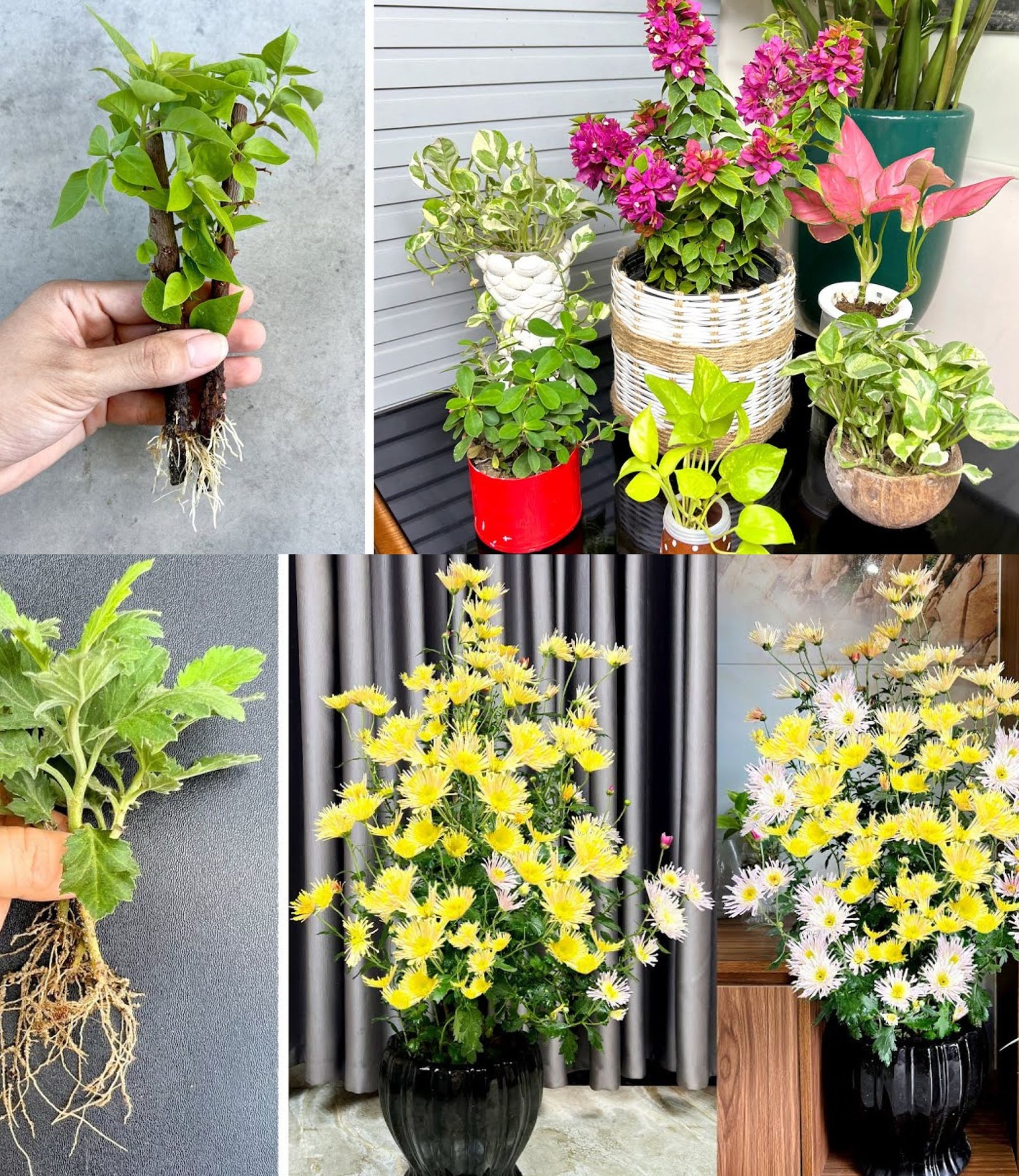
How to propagate plants in water to help purify indoor air Air Purifying Indoor Plants🌱
Propagating plants in water is a popular and straightforward method to expand your collection of air-purifying indoor plants. Here’s a step-by-step guide to help you propagate plants in water for indoor air purification:
Materials Needed:
- Healthy parent plants with suitable cuttings
- Clean, clear glass or plastic containers
- Room-temperature water
- Scissors or pruning shears
- Optional: Rooting hormone (for some plant varieties)
- Optional: Pebbles or decorative stones (for stabilization)
Steps:
- Select Healthy Parent Plants:
- Choose healthy and disease-free parent plants that are known for their air-purifying qualities. Spider plants, pothos, snake plants, and peace lilies are popular choices.
- Choose Suitable Cuttings:
- Identify sections of the parent plant that can be cut for propagation. Look for stems that have nodes, where roots will develop.
- Prepare the Containers:
- Use clean, clear containers to hold the cuttings and water. Transparent containers allow you to monitor root development easily. Ensure the containers are large enough to accommodate the cuttings without crowding.
- Cutting the Stems:
- Using clean scissors or pruning shears, cut a section of the parent plant’s stem that is around 4-6 inches long. Ensure there are a few leaves and at least one or two nodes on the cutting.
- Remove Excess Leaves:
- Remove excess leaves from the lower portion of the cutting. Leave a few leaves at the top for photosynthesis.
- Optional: Apply Rooting Hormone:
- If you have rooting hormone available, dip the cut end of the stem into the hormone before placing it in water. Rooting hormone can stimulate the development of roots.
- Place Cuttings in Water:
- Submerge the cut end of each stem in the room-temperature water. Ensure that the nodes, where roots will form, are underwater. You can place multiple cuttings in a single container.
- Stabilize Cuttings (Optional):
- If the cuttings are top-heavy, you can use pebbles or decorative stones to stabilize them in the water.
- Position in Indirect Light:
- Place the containers in a location with bright, indirect light. Avoid exposing them to direct sunlight, as it can lead to excessive algae growth in the water.
- Change Water Regularly:
- Change the water every few days to keep it fresh and prevent the development of algae and bacteria. Rinse the roots gently during water changes.
- Monitor Root Development:
- Over time, you’ll observe roots growing from the nodes of the cuttings. Once the roots are a few inches long, the cuttings are ready for transplanting.
- Transplant into Soil:
- Plant the rooted cuttings into suitable potting mix or soil. Ensure that the soil is well-draining.
- Continue Indoor Care:
- Once transplanted, care for the new plants as you would care for mature plants of the same species. Provide appropriate light, water, and humidity.
Air-Purifying Plant Options:
- Spider Plant (Chlorophytum comosum):
- Known for removing formaldehyde and xylene from the air.
- Pothos (Epipremnum aureum):
- Effective in removing indoor pollutants like benzene, toluene, and formaldehyde.
- Snake Plant (Sansevieria trifasciata):
- Recognized for its ability to filter out formaldehyde, benzene, and other toxins.
- Peace Lily (Spathiphyllum):
- Excellent at removing mold spores and VOCs (volatile organic compounds).
Tips for Success:
- Choose Suitable Plant Varieties: Not all plants are suitable for water propagation. Opt for plants that readily root in water, such as pothos, spider plants, and philodendrons.
- Provide Adequate Light: While propagating in water, ensure the cuttings receive bright, indirect light for optimal root development.
- Maintain Clean Water: Regularly change the water to prevent the growth of algae and bacteria, and rinse the roots during water changes.
By following these steps, you can successfully propagate air-purifying plants in water and later transplant them into soil for continued indoor air purification. This process allows you to expand your collection of healthy indoor plants and improve the air quality in your home.
